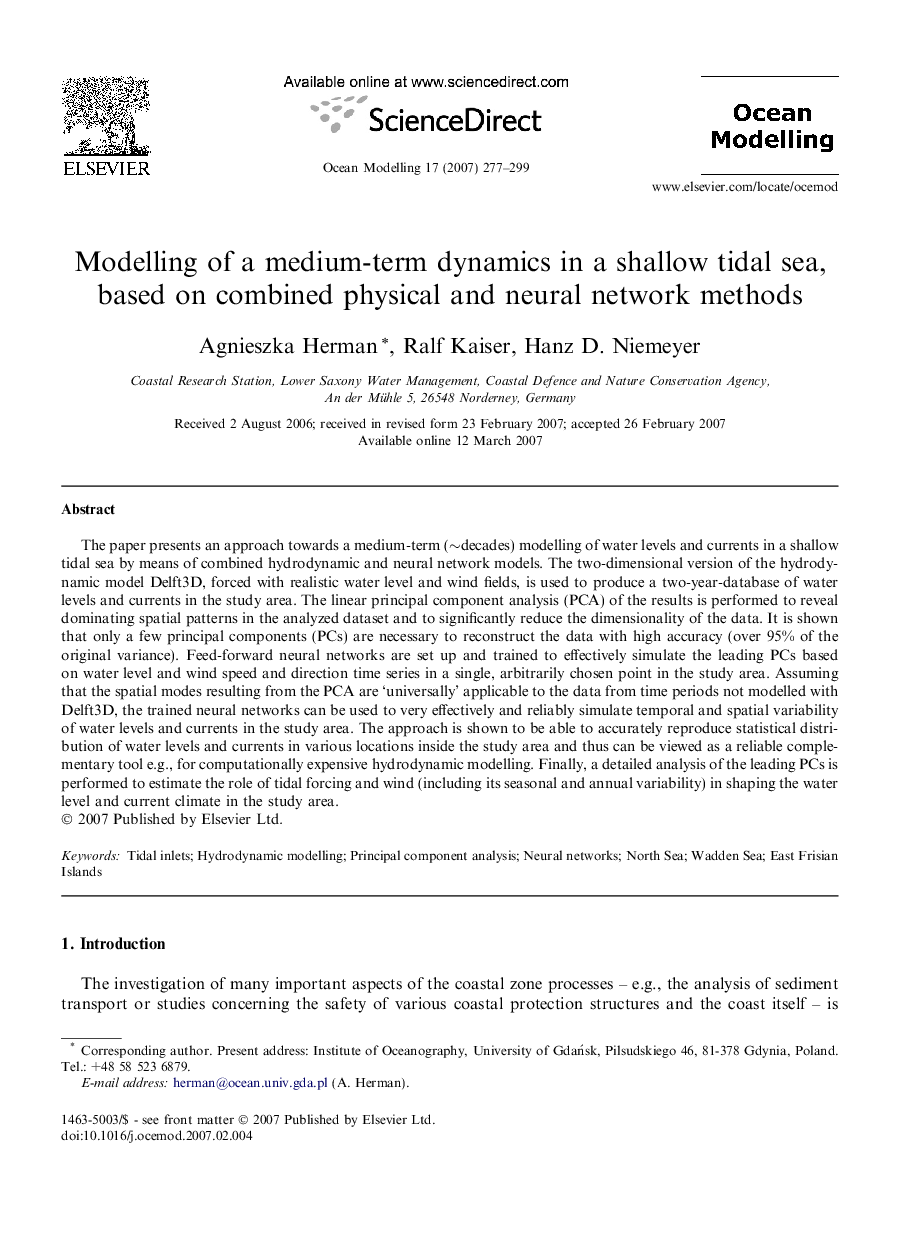| Article ID | Journal | Published Year | Pages | File Type |
|---|---|---|---|---|
| 4552704 | Ocean Modelling | 2007 | 23 Pages |
The paper presents an approach towards a medium-term (∼decades) modelling of water levels and currents in a shallow tidal sea by means of combined hydrodynamic and neural network models. The two-dimensional version of the hydrodynamic model Delft3D, forced with realistic water level and wind fields, is used to produce a two-year-database of water levels and currents in the study area. The linear principal component analysis (PCA) of the results is performed to reveal dominating spatial patterns in the analyzed dataset and to significantly reduce the dimensionality of the data. It is shown that only a few principal components (PCs) are necessary to reconstruct the data with high accuracy (over 95% of the original variance). Feed-forward neural networks are set up and trained to effectively simulate the leading PCs based on water level and wind speed and direction time series in a single, arbitrarily chosen point in the study area. Assuming that the spatial modes resulting from the PCA are ‘universally’ applicable to the data from time periods not modelled with Delft3D, the trained neural networks can be used to very effectively and reliably simulate temporal and spatial variability of water levels and currents in the study area. The approach is shown to be able to accurately reproduce statistical distribution of water levels and currents in various locations inside the study area and thus can be viewed as a reliable complementary tool e.g., for computationally expensive hydrodynamic modelling. Finally, a detailed analysis of the leading PCs is performed to estimate the role of tidal forcing and wind (including its seasonal and annual variability) in shaping the water level and current climate in the study area.
